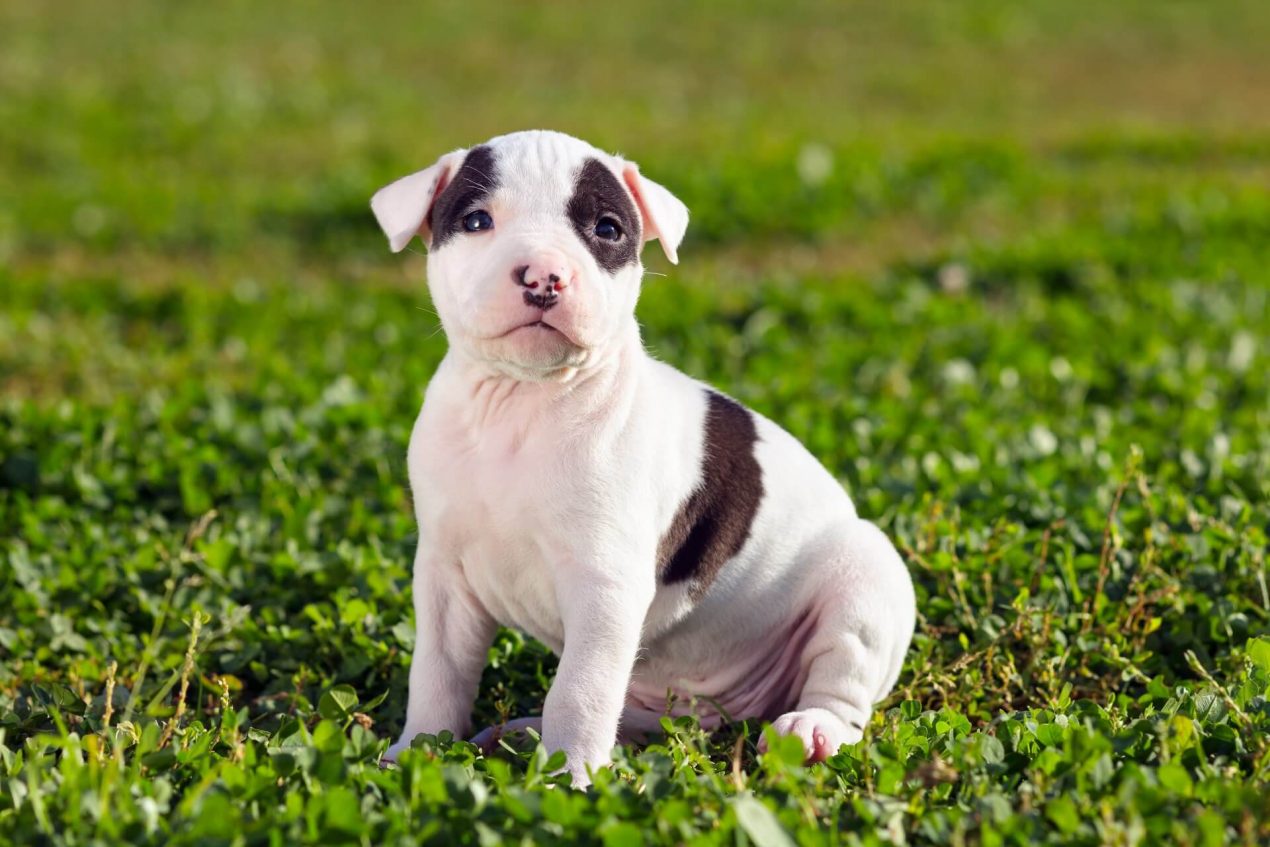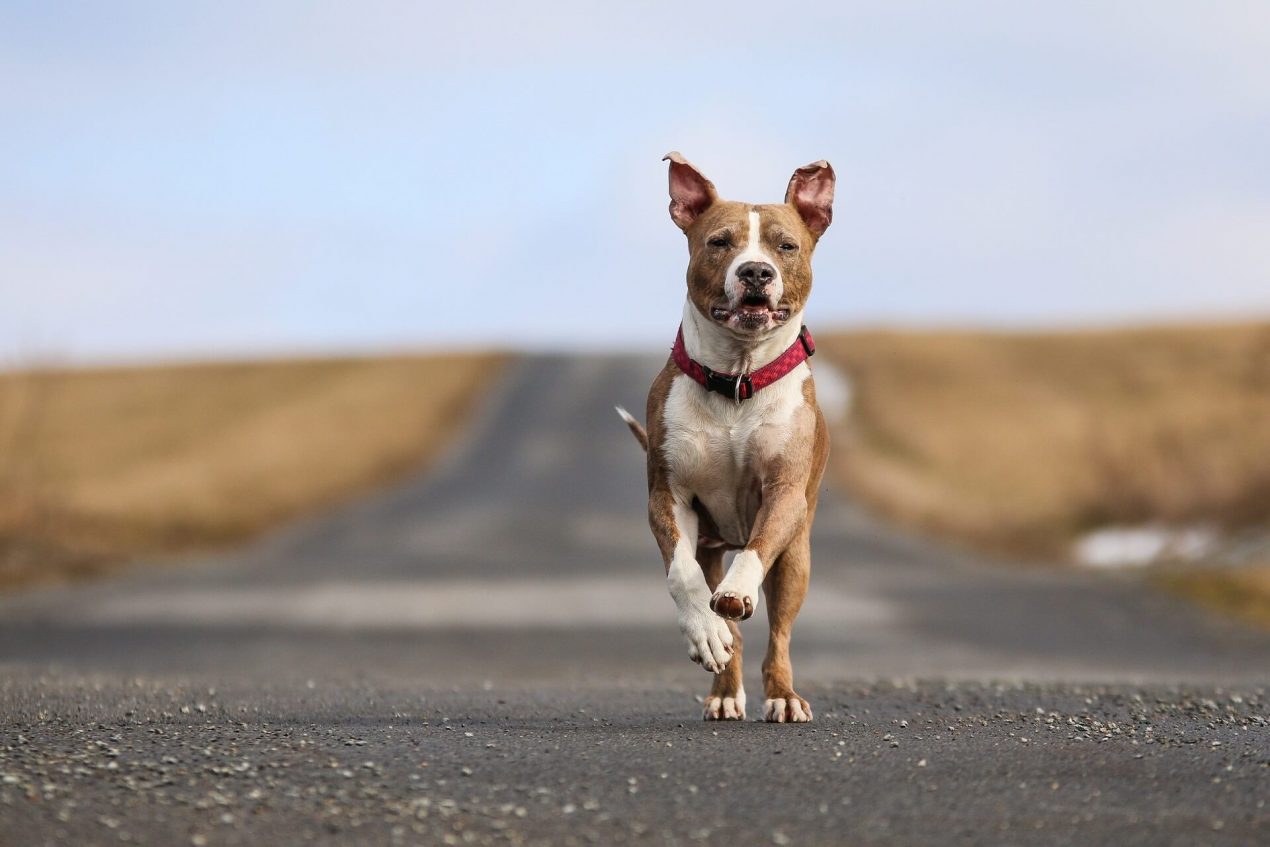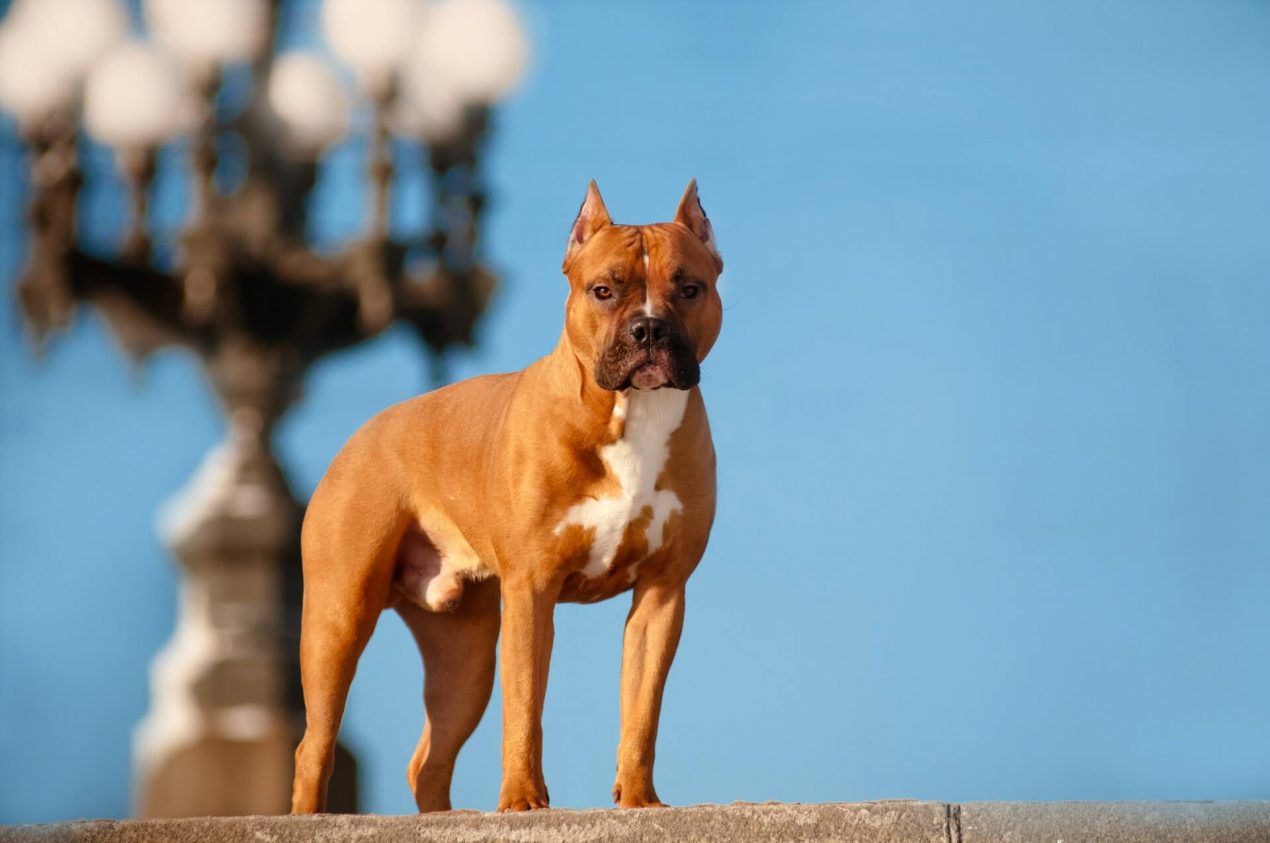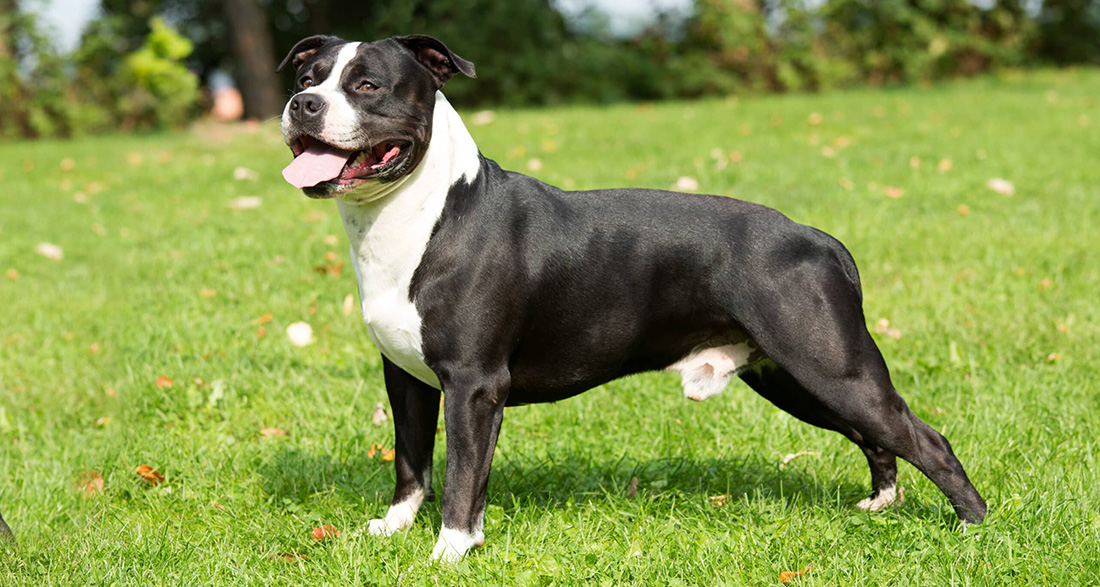In the United States, the American Staffordshire Terrier is listed as a dangerous breed. Nevertheless, with the right training, it can become a playful and affectionate companion. Here you will find everything you ever wanted to know about this popular breed.
History of the American Staffordshire Terrier
The predecessor of the American Staffordshire Terrier is the so-called “Bull and Terrier.” The English bred the breed in the early 19th century in the Midlands specifically for dog fights. They had to engage in fights in the arenas between dog and badger, dog and dog, or even dog and rats. The dogs needed the strength of the Pit Bull and the courage, endurance, and tenacity of a Terrier.
When animal fights were banned in Britain in 1835, some organizers decided to leave the country. British immigrants introduced the dog to the United States around 1860, where they could resume dog fighting commercially around 1880. Over time, two different lines of Bull Terriers developed. The emigrants used one as a fighting dog and the other more as a guard and family dog.
To clearly distinguish themselves from the dogfighting scene, the breed was then split into the American Pit Bull Terrier and the American Staffordshire Terrier. The “Staffordshire” part of the name comes from its place of origin in England. In 1936, the breed standard of the American Staffordshire Terrier was officially recognized by the American Kennel Club. The goal of breeding the Amstaff was to move away from dog fighting and make the breed also interesting for exhibitions. Since January 1, 1972, the breed has been classified in the FCI Group 3 “Terriers” and is assigned to Section 3 “Bull-Type Terriers.”
Breed Overview
GROUP: Terrier
HEIGHT: 17 to 18 inches (female), 18 to 19 inches (male)
WEIGHT: 40 to 55 pounds (female), 55 to 70 pounds (male)
COAT: Short, stiff fur
COAT COLOR: Variety of colors, including black, brown, blue, fawn, red, and liver; brindle and/or white markings also possible
LIFE SPAN: 12 to 16 years
TEMPERAMENT: Courageous, affectionate, protective
HYPOALLERGENIC: No
ORIGIN: United States
Traits and Characteristics
The American Staffordshire Terrier is a brave, intelligent, and loyal dog that forms a strong bond with its owner. Despite its appearance, the Amstaff is surprisingly playful and loves to cuddle. The attentive dog guards its human pack with passion and then goes into “defense mode.” To prevent serious conflicts when the four-legged friend perceives a threat to its family, it needs consistent yet affectionate training. Generally, it is only suitable for experienced dog owners who can invest a lot of time in training.
Contrary to popular belief, the breed has a relatively high threshold for stimulation and remains calm and composed in many situations. Due to its dominant nature and strong character, it often does not get along well with other dogs. It needs to satisfy its strong need for movement regularly and wants to be sufficiently physically and mentally stimulated. Due to its fitness-oriented breeding, the American Staffordshire Terrier remains active well into old age and has a relatively long life expectancy of 12 to 16 years.
| Affection Level | High |
| Friendliness | Medium |
| Kid-Friendly | Medium |
| Pet-Friendly | Medium |
| Exercise Needs | Medium |
| Playfulness | Medium |
| Energy Level | Medium |
| Trainability | Medium |
| Intelligence | Medium |
| Tendency to Bark | Medium |
| Amount of Shedding | Medium |
How to Care for an American Staffordshire Terrier
Considerations Before Getting One:
If you’re considering getting an American Staffordshire Terrier, you should first be aware that it is considered a “dangerous breed” in some states. Breeding this breed is completely prohibited in some federal states. The breeder must be affiliated with one of the three AKC (American Kennel Club) associations, and usually, a good dog liability insurance policy is required. Under no circumstances should you buy puppies from shady breeders, as they are often sick or behaviorally disturbed. For a purebred puppy from a reputable breeder, you should expect to pay around $1000. If you don’t want to spend that much money and want to do something good, you can often find American Staffordshire Terriers and mixed breeds in animal shelters.
In general, the breed does not require elaborate grooming. You should only brush the short, smooth coat occasionally to remove loose hair. The American Staffordshire Terrier is also quite undemanding when it comes to dog food. Health-wise, the Amstaff is very robust and only occasionally suffers from hip dysplasia and congenital heart weaknesses.

Training and Puppy Development
As an adult dog, the American Staffordshire Terrier possesses immense strength and must learn its boundaries even as a puppy. Since the breed is highly intelligent, the dog will primarily try to exploit its owner’s weaknesses during puberty and will test the hierarchy repeatedly. To help the puppy get used to other dogs and people, attending a dog school is an absolute must. With the right training, you can turn any breed into a balanced and peace-loving dog. Unfortunately, many dog owners neglect the basics of dog training in the first few months and quickly become overwhelmed with the training of the dominant dog. If the dog then exhibits undesirable behavior, it is usually due to improper training.
Activities with the American Staffordshire Terrier
Due to its strong desire for movement and its tremendous endurance, the American Staffordshire Terrier needs extensive walks and physical activity every day. It feels most comfortable with owners who enjoy hiking, jogging, or walking themselves. With responsible handling and enough exercise, the Amstaff is an ideal companion dog that you can take anywhere. This active breed can also be enthusiastic about dog sports like agility. While it’s possible to use them as guard dogs, the Amstaff tends to be overly protective of its family. A house with a large outdoor area is best suited for the Staffordshire Terrier. They won’t be happy in a cramped city apartment.

Interesting and Informative
The classification of the Amstaff as a “fighting dog” is highly controversial. Critics of the breed believe in a breed-related danger to humans and an exaggerated attack and combat behavior. However, a comparison of listed dogs with Golden Retrievers shows no significant differences in aggression behavior. The dog’s behavior depends solely on its upbringing.
Cropped ears as a beauty ideal:
Unfortunately, it is widespread, especially among so-called “fighting dogs,” to crop the puppies’ ears immediately after birth. Ear cropping involves the surgical shortening of the ear or tail. In the past, these mutilations were common in breeds like the Doberman, Boxer, and similar breeds. They were considered a “beauty ideal” for the poor animals. A cropping template is applied to the approximately seven-week-old puppy, and all protruding parts of the ear are cut off with a scalpel. However, cropping, as well as the importation of cropped animals, has been prohibited in the United States for 30 years. Nevertheless, dogs with cropped ears can still be found in the U.S.

American Staffordshire Terrier in Film and Television
The most famous American Staffordshire Terrier can be found in the children’s series “Our Gang,” also known as “The Little Rascals.” The extremely popular series revolves around a group of children and a dog and aired between 1922 and 1944 in 220 episodes. The four-legged companion was the protector, playmate, and best friend of the children. This dog was portrayed by the friendly Pit Bull “Pal the Wonder Dog.” He was later the first dog to be registered with the American Kennel Club under the new breed “Staffordshire Terrier.”
American Staffordshire Terrier Overview
Pros
- Good-natured, playful, and sociable
- Intensely loyal
- Good watchdog
Cons
- Requires early and consistent socialization
- Can be overly protective
- Stubborn nature can complicate training
Do you also have an American Staffordshire Terrier or plan to get one soon? Share with me in the comments what makes the Amstaff so special!


